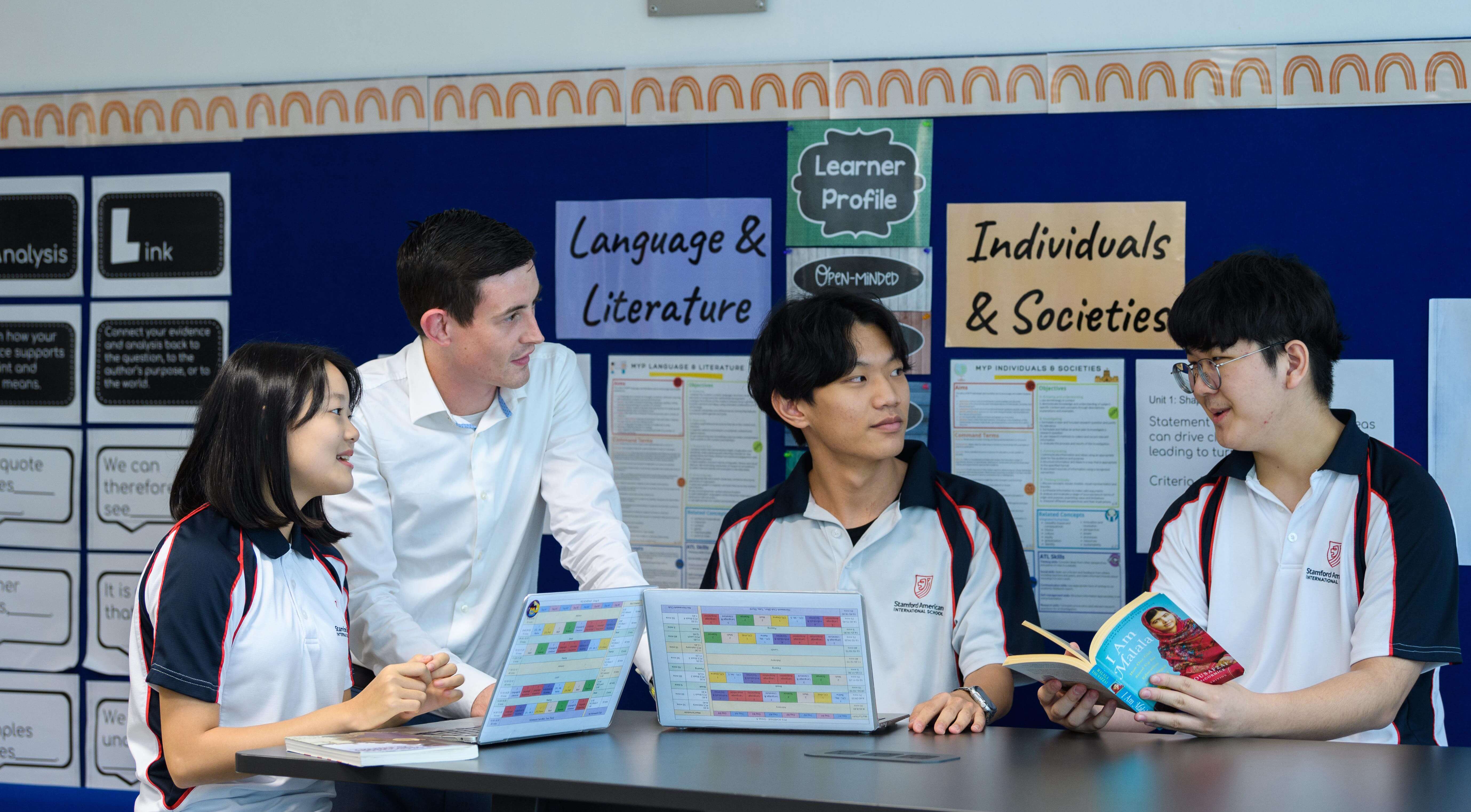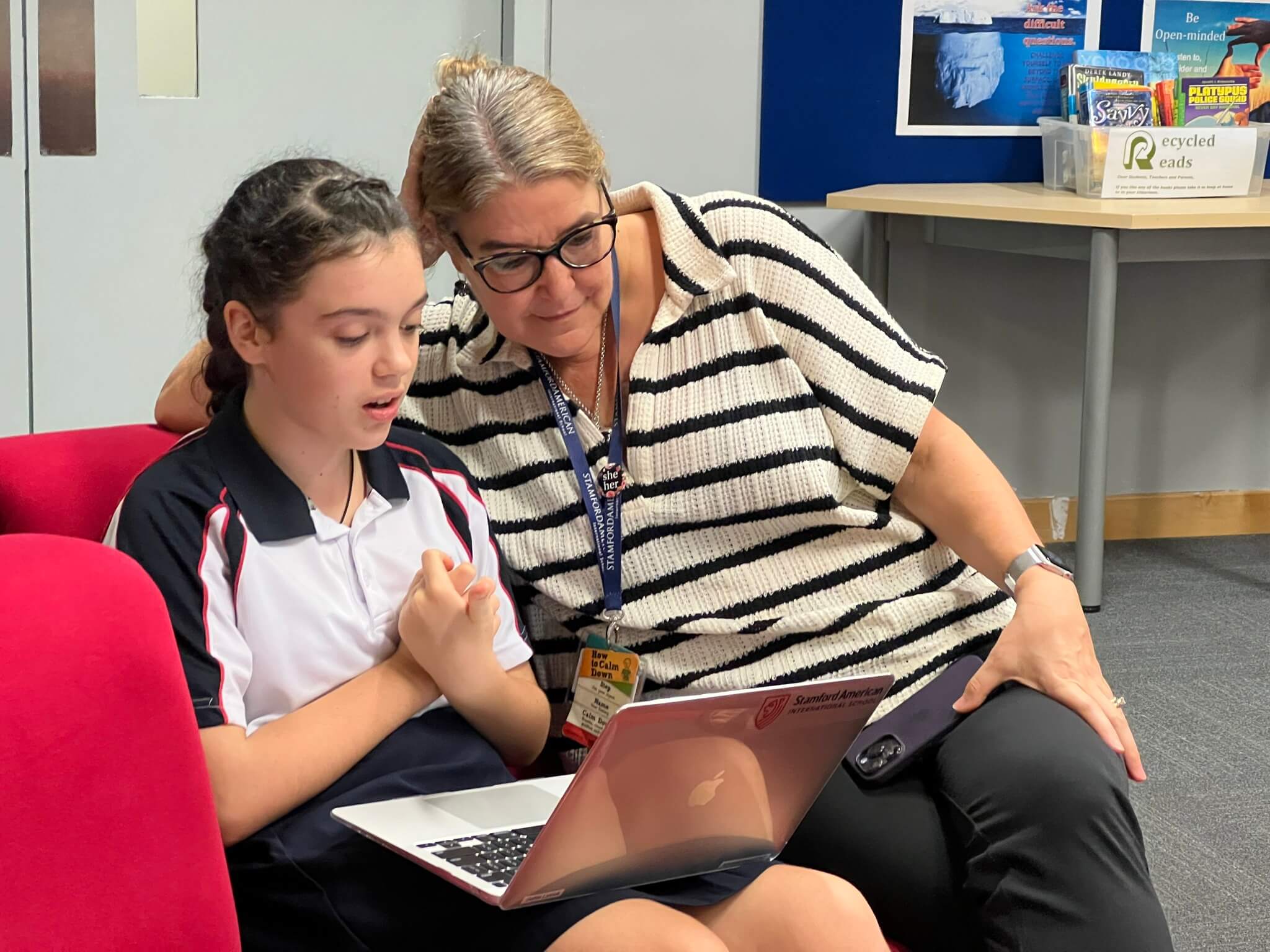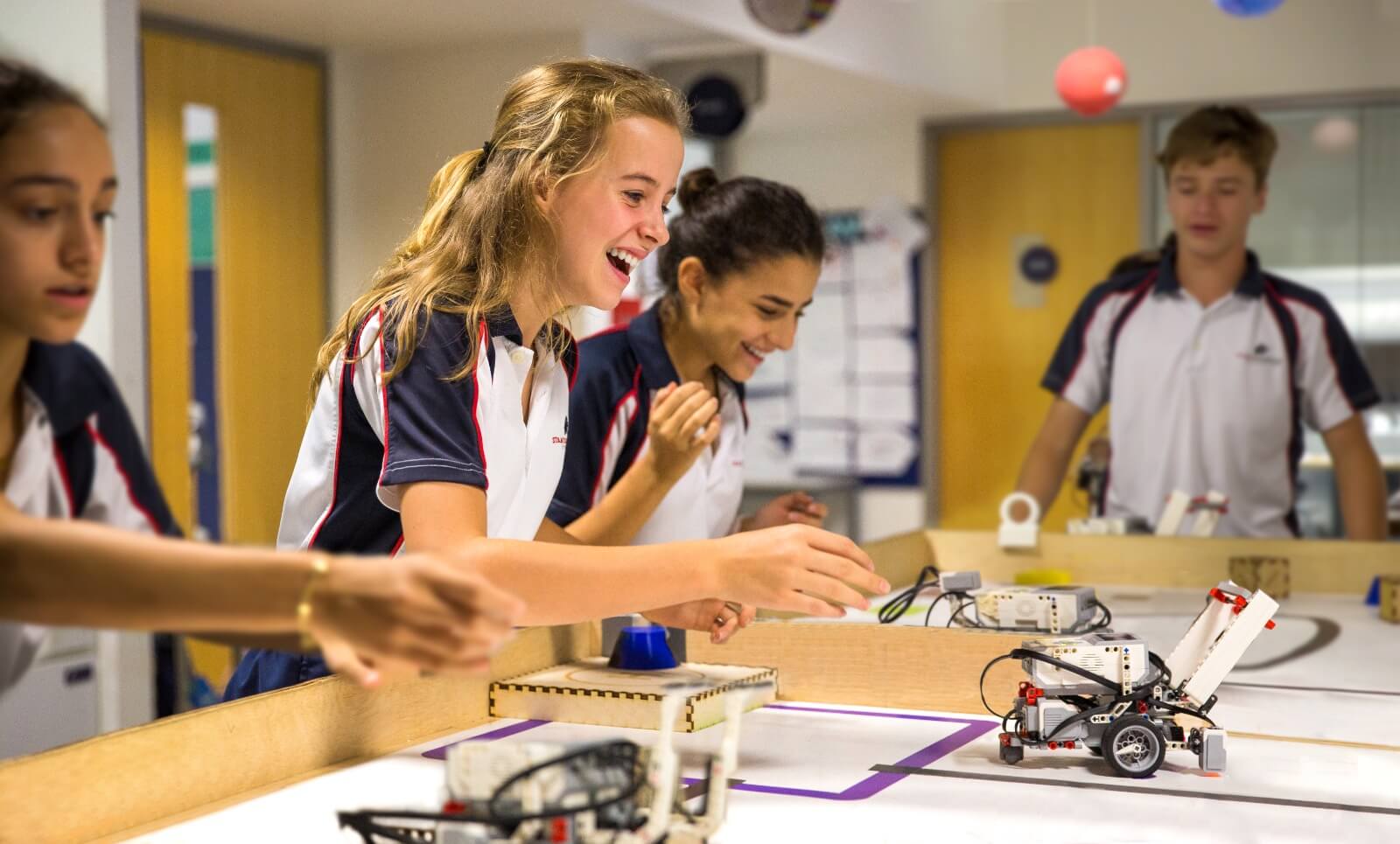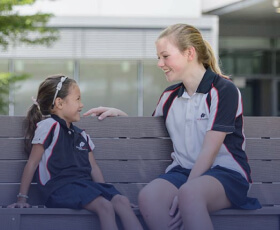Middle school is a pivotal phase in a child’s life, marking the transition from childhood to the early stages of adolescence. During this time, students undergo rapid changes—academically, socially, and emotionally—making it an ideal period to foster critical skills that will serve them throughout higher education and, eventually, their professional lives. By selecting the right middle school in Singapore, parents can help their children build on the foundational skills acquired in elementary school and further develop qualities that will serve as the building blocks for their future success.
Middle school marks an exciting yet challenging stage in a child’s journey, transitioning from childhood to early adolescence. This dynamic period sees students experiencing significant academic, social, and emotional growth. Stamford American International School, provides the ideal platform for nurturing essential skills and building a solid foundation for higher education and future career success.
The Complete Parent’s Guide to Middle School in Singapore
- Understanding the Middle School Structure in Singapore
- Kinds of Middle Schools in Singapore
-
- Government Schools
-
- Government-aided Schools
-
- Autonomous Schools
-
- Independent Schools
-
- Specialized Schools
-
- Specialized Independent Schools
-
- Private Schools
-
- International Schools
- Singapore Middle Schools Fees
- Singapore Middle School Core Subjects
-
- English Language
-
- Mother Tongue
-
- Language Acquisition
-
- Mathematics
-
- Science
-
- Humanities
-
- Art and Music
-
- Design and Technology (D&T)
-
- Physical Education (PE)
- Co-Curricular Activities in Singapore Middle Schools
-
- Sports and Athletics
-
- Arts and Culture
-
- Academic and Interest-Based Clubs
- Community Service and Leadership Opportunities in Singapore Middle Schools
-
- Student Council
-
- Volunteer Programs
-
- Leadership Camps
- Student Support Programs in Singapore Middle Schools
-
- Social-Emotional Learning
-
- Academic Support
-
- Counseling
- How to Choose the Right Middle School for Your Child: 5 Helpful Tips
-
- Assess the School’s Curriculum and Programs
-
- Consider the School’s Values and Culture
-
- Explore Extracurricular Activities and Special Programs
-
- Review Support Services and Student Well-being Initiatives
-
- Evaluate the School Location and Commute
- Provide Your Child with Quality International Middle School Education at Stamford American
Understanding the Middle School Structure in Singapore
In Singapore, middle school, also known as secondary school or junior high, typically serves students aged 12 to 16 and spans Grades 6 to 8. This stage of education is designed to prepare students for the more demanding expectations of high school or upper secondary education when they have to focus on subjects that are more aligned with their future academic or career paths, providing a foundation for their specialized studies in the years to come.
Types of Middle Schools in Singapore
When exploring options for middle schools in Singapore, it’s essential to understand the different types of schools and educational programs available. Here’s a breakdown of the key categories:
- Government Schools: These schools adhere to the national syllabus and provide high-quality education, including unique elective courses and applied subjects tailored to students’ needs.
- Government-aided Schools: Similar to government schools, these institutions also follow the national syllabus but are established to meet the specific educational needs of the communities served by their founding organizations.
- Autonomous Schools: A subset of government and government-aided schools, autonomous schools maintain the national curriculum while enjoying the flexibility to offer a broader range of programs, enhancing the learning experiences for their students.
- Independent Schools: These schools play a crucial role in assessing Singapore’s education system. They receive government support but have greater autonomy regarding teacher selection and curriculum development. Independent schools typically offer GCE O-Level or A-Level examinations, and some follow the International Baccalaureate (IB) curriculum.
- Specialized Schools: Focused on experiential and hands-on learning, specialized schools aim to prepare students for employment or entry into technical training programs, providing practical skills alongside academic knowledge.
- Specialized Independent Schools: These institutions concentrate on specific talents, such as sports or the arts, as well as academic strengths in areas like science, mathematics, and technology. They cater to students who excel in particular fields and seek specialized training.
- Private Schools: Offering alternative curricula, private schools provide flexibility and cater to specialized learning needs or philosophies. While they often have higher fees and limited student slots, they offer a different educational approach compared to public schools.
- International Schools: Popular among expatriate families, international schools in Singapore follow globally recognized curricula, such as the International Baccalaureate (IB) Middle Years Programme (MYP). These schools facilitate smoother transitions for students relocating and emphasize a global perspective, fostering connections among peers from diverse backgrounds.
Middle School Fees in Singapore
Tuition and fees for middle schools in Singapore can vary significantly based on the type of school. Government schools offer the most affordable option for middle school education, with local citizens typically enjoying subsidized rates. Government-aided schools are similar in that they also provide affordable education, although fees may differ depending on the specific programs and resources offered.
On the other hand, autonomous and independent schools tend to charge higher fees due to their increased flexibility and additional programs. The tuition for these schools can range from moderate to high, depending on what each institution offers. Specialized and specialized independent schools also come with higher fees, reflecting their focused curricula and specialized training. Parents should be prepared for additional costs that correspond to the unique programs available at these institutions.
Private schools generally start at around $10,000 per year, making them higher in cost than government options. These institutions often provide alternative curricula and can involve various additional costs associated with their programs. International schools, known for their globally recognized curricula, diverse communities, extensive co-curricular programs, state-of-the-art facilities, and experienced international faculty, typically have tuition fees ranging from $20,000 to over $50,000 per year.
In addition to tuition, parents should anticipate other expenses, such as registration fees and enrollment fee, which many schools charge upon application and enrollment. Uniforms are often required, adding to overall costs, along with textbooks, which parents usually must make their own purchase. Extracurricular activities, which can enhance the school experience, often come with additional fees, and some schools may charge technology fees for digital resources or devices provided for student use. If the school does not offer on-campus housing, transportation costs may also be a consideration for parents. Furthermore, many schools organize field trips, camps, and other activities that may incur extra costs.
While the overall expenses for middle school education in Singapore can be considerable, many of these additional costs contribute significantly to the enriching educational experiences that students receive. When selecting a school, parents should evaluate both the tuition and the potential extra fees to ensure they choose the best option for their child and their family budget.

Middle School Subjects in Singapore
Middle school curricula are designed to equip students with competencies that will impact their future as they explore various career paths. These subjects foster critical thinking, curiosity, and problem-solving skills while providing foundational knowledge that students will build upon in higher education and beyond. Here is a breakdown of key subjects typically offered in Singapore’s middle school curriculum:
- English Language – This core subject helps students develop proficiency in communication, essential for academic success and future workplaces. It cultivates critical literacy and comprehension skills necessary across all areas of study. International schools may offer intensive language programs to assist non-native English speakers in achieving greater independence in using English.
- Mother Tongue – Studying a mother tongue language reinforces cultural identity and develops bilingual communication skills that are beneficial in Singapore’s multicultural society. Local middle schools typically offer classes in Chinese, Malay, or Tamil, allowing students to connect with their heritage.
- Language Acquisition – International schools often provide a wider range of language classes, workshops, and clubs. Some institutions even offer bilingual classes across various academic levels, supporting students’ language development.
- Mathematics – This subject strengthens logical thinking and problem-solving abilities, applicable in nearly every academic and professional field. Mastery of mathematical concepts builds analytical skills and prepares students for advanced studies in science and technology.
- Sciences – Covering general science as well as specific disciplines like physics, chemistry, and biology, science education nurtures curiosity about the natural world. This subject area develops experimental and research skills, promoting an inquiry-based mindset when approaching problems.
- Humanities – Subjects such as history and geography encourage students to understand and appreciate global and local contexts. They foster social responsibility and critical thinking about cultural and historical events at both local and international levels.
- Art and Music – These subjects provide opportunities for students to explore creativity and self-expression, as well as to gain cultural awareness. They contribute to emotional intelligence and help cultivate an appreciation for diverse artistic traditions.
- Design and Technology: This subject introduces students to practical, hands-on learning experiences. Through design-and-make projects, students research, design, and create products that offer effective solutions to real-world problems.
- Physical Education (PE) – PE promotes physical fitness and discipline among students. These classes encourage active and healthy lifestyles, supporting overall well-being and effective stress management.

Co-curricular Activities in Singapore Middle Schools
Co-curricular activities (CCAs) or extracurricular activities are essential in Singapore middle schools, providing students with opportunities to learn skills beyond the traditional classroom setting. These activities foster a balanced environment where students can explore their interests, develop teamwork skills, and cultivate a sense of community. Here are some popular categories of CCAs available in Singapore:
- Sports and Athletics – Participation in sports such as badminton, swimming, gymnastics, tennis, volleyball, and golf help students learn discipline and commitment while promoting their physical development. These activities also encourage healthy competition and physical fitness.
- Arts and Culture – Clubs focusing on performing arts and theater, music, and visual arts allow students to express their creativity and collaborate with peers. Engaging in these activities helps develop confidence and an appreciation for the arts.
- Academic and Interest-Based Clubs – Various clubs, such as language clubs and digital innovation clubs, provide platforms for students to pursue interests aligned with their academic goals. These clubs encourage intellectual curiosity and help students develop critical thinking and problem-solving skills.
Balancing academics and extracurricular activities is crucial during middle school, as this stage lays the groundwork for effective time management and responsibility. When students successfully navigate their schedules to accommodate both their studies and CCAs, they cultivate essential life skills that contribute to their overall success, both personally and academically.

Community Service and Leadership Opportunities in Singapore Middle Schools
Engaging in community-focused CCAs is essential for middle school students, as these programs help foster values like responsibility and integrity. Such values are critical in building character and preparing students for future leadership roles.
Here are a few examples of community-oriented CCAs:
- Student Council – This platform allows students to take on leadership roles, voice their opinions, and actively participate in school improvement initiatives. It helps them develop decision-making and organizational skills.
- Volunteer Programs – Involvement in clubs that assist local communities, such as the Red Cross Youth or environmental clubs, encourages students to make a positive impact and reinforces their sense of social responsibility.
- Leadership Camps – These camps and workshops focus on developing leadership and teamwork skills through various activities and real-life problem-solving scenarios, equipping students with the tools they need for effective leadership.
By participating in these community service and leadership activities, middle school students have the opportunity to contribute meaningfully to society while also developing empathy and a sense of community involvement.

Student Support Programs in Singapore Middle Schools
Social dynamics undergo significant shifts during middle school, making it a challenging time for students as they navigate evolving friendships, changing peer groups, and a developing sense of identity and independence. As a parent, it’s imperative to collaborate with teachers to help students manage these changes. Encouraging open communication at home and in school, while discussing social issues without judgment, sets a positive example for children in building healthy relationships and overcoming social hurdles.
Emotional resilience is crucial for handling the academic pressures and social complexities that arise during middle school. To support students in these areas, many middle schools in Singapore offer various support services that provide a safe space for students to express their concerns and learn effective coping strategies. These include:
- Social-Emotional Learning (SEL) – SEL programs aim to help students recognize and manage their emotions, set positive goals, show empathy for others, and build healthy relationships. Through various lessons and activities, students develop essential skills such as self-awareness and emotional regulation, which are foundational for navigating social challenges and stress. At Stamford American International School, we are committed to nurturing well-rounded students equipped with the skills to thrive both academically and personally. As part of this mission, we proudly adopt the award-winning Second Step social program, a proven approach rooted in Social-Emotional Learning (SEL).
- Academic Support – Academic support programs are designed to assist students in managing their schoolwork and cultivating positive study habits. These resources can significantly reduce stress and enhance confidence. Support may include tutoring sessions, study skills workshops, and individualized support plans tailored to help students cope with academic pressures and achieve their learning goals.
- Counseling – School counseling provides students with a safe environment to discuss personal and academic issues with trained counselors. These professionals help students address their concerns and offer practical coping strategies and emotional support tailored to individual needs.
Additionally, managing an online presence has become an integral part of growing up in the digital age. As many middle school students begin exploring social media, they can encounter various risks without proper guidance. It’s essential to ensure that the middle school you choose has established safety guidelines and policies that prioritize the welfare and well-being of students as they navigate the internet.
How to Choose the Right Middle School for Your Child
Choosing the ideal middle school for your child involves understanding their academic capabilities and future aspirations. Once you have a clear sense of what your child needs, consider the following tips to determine which school provides the best learning environment:
- Assess the School’s Curriculum and Programs – Start by evaluating the curriculum and learning pathways offered by the schools you’re considering. Different schools may follow various curricula, such as the International Baccalaureate (IB) or Singapore’s national system. If your child thrives in a flexible, inquiry-based environment, the IB Middle Years Programme (MYP) might be a suitable fit.
- Consider the School’s Values and Culture – The culture of a school significantly influences a student’s middle school experience. It should align with your family’s values and support your child’s personal development. To get a sense of the school culture, tour the campus if possible, and observe the interactions among students, teachers, and staff.
- Explore Extracurricular Activities and Special Programs – Middle school is an opportunity for students to explore new interests. It’s beneficial to know the range of co-curricular activities (CCAs) or specialized programs available. Schools that offer strong CCAs in areas like sports, the arts, or community service can provide a balanced environment that fosters both academic and personal growth.
- Review Support Services and Student Well-being Initiatives – Consider the resources the school provides for academic support and counseling, as well as social and emotional learning (SEL) programs. Schools with dedicated support services can offer your child additional guidance during their middle school years, helping them navigate both academic and social challenges.
- Evaluate the School Location and Commute – A long commute can be exhausting for middle school students, especially with daily academic demands. Take into account the distance from home to the school, the convenience of transportation, and any available options for school bus services.
By following these tips, you can closely assess your options and find the school that best aligns with your child’s needs and goals.

Provide Your Child with Quality International Middle School Education at Stamford American
At Stamford American, we recognize the importance of this transformative phase. Our Middle School curriculum, built around the International Baccalaureate (IB) Middle Years Programme (MYP), is designed to foster adaptability, critical thinking, and a global perspective. By emphasizing a well-rounded education and personalized support, Stamford American prepares students not only for academic success but also for the challenges of a rapidly evolving world.
Beyond academics, Stamford American places a strong emphasis on supporting students in their social and emotional development. Our American Middle School provides academic support and counseling services, and we work closely with parents to ensure the well-being of our middle school-aged students. By making these resources available and maintaining open communication with families, we can create a nurturing environment where students develop emotional awareness and positive social connections.
Additionally, Stamford American fosters holistic growth through over 350 diverse co-curricular activities (CCAs), including sports, arts, and academic clubs. By balancing rigorous academics with social, emotional, and extracurricular support, our international school in Singapore prepares students for the challenges of middle school while helping them become confident, well-rounded individuals.
To learn more about our middle school program, please book a campus tour or contact our admissions team.










